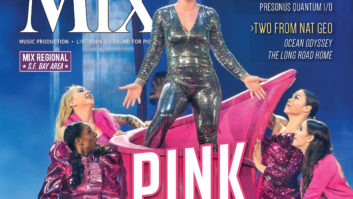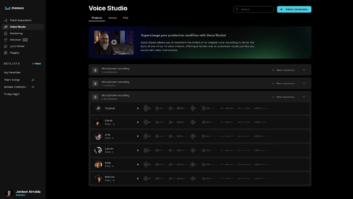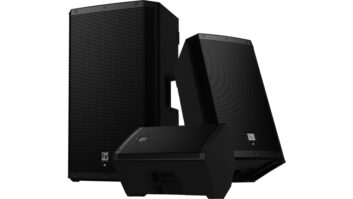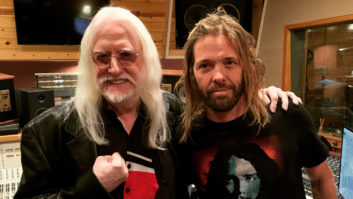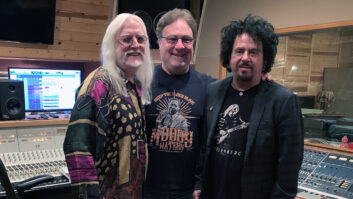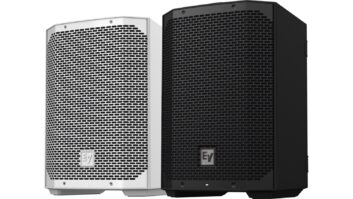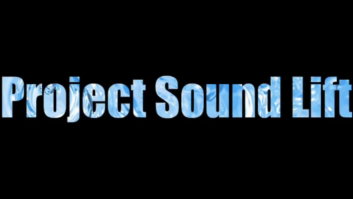
Johnny Marr’s name is synonymous with guitar playing, though these days the one-time sound sculptor for The Smiths thinks more like a singer and a lyricist. Currently on tour and having just released his third solo album, Call the Comet, Marr has been in the frontman position since about 2011. And before that, he was filling the same role with his Johnny Marr and the Healers project some 15 years ago.
“I would recommend to any studio-y, tech-y musician to wear the singer’s hat on occasion,” Marr says from his Crazy Face Factory Studios in his hometown of Manchester, England. “It can be a good combination of process versus too much process. Being the singer has given me a new objectivity on process, especially if I’m being that guy who is faced right up against the screen, getting into the technicalities and losing the vibe.
“Singing the songs has really helped me get an aesthetic distance,” he adds. “When I was building my own studios in my 30s and getting into the minutiae of recording, it was a joy. But it doesn’t always make for the best listen.”
On his self-produced solo albums, Marr lives in the same sonic mindspace he was in prior to The Smiths. The format is quite straightforward: short, revved-up songs, tightly arranged, upbeat tempo, two guitars left and right, background vocals—all appropriate for a small club or venue, with concepts and themes that are fairly metropolitan. For Call the Comet, he ventures deeper.

“It’s rock ’n’ roll, but it’s not classic rock,” he explains. “It’s looking for emotional drama from machines rather than pop, which is a very rock consideration, but the machines make it anti-rock. I use the same idea with my guitar playing, But, subconsciously, I’m still influenced by, or drawn to, not so much the records and the bands of the early ’80s, but the possibilities of that technology and atmosphere.”
An example of this is “Walk Into the Sea,” where the Oberheim DMX drum machine, rather than a Roland 808 or 909, is used and then put through pedals with echo—what Marr thinks of as an “Industrial North” approach. This is in reference to his setting on the top floor of a factory in the north of England. Says Marr, “There are more sequencer-propelled songs—‘New Dominions,’ ‘Actor Attractor,’ ‘My Eterna”—but they’re not at all club music. The way I use synthesizers, it’s like house music never happened.”
The use of pedals on all the instruments is prevalent on Call the Comet. Marr favors Carl Martin pedals for their musicality: Delayla for delay, Plexitone for distortion, AC-Tone for overdrive. He also likes Lovetone’s Doppelganger, Ring Stinger, Brown Source and Big Cheese for more extreme modulation and flange effects. Kicking pedals in and out while the track is playing really loud is how he edits, comfortable in the performance aspect of his actions. This method also lends itself to the ring modulation technique employed on Call the Comet.

“[Marr] adjusts setting along with the music, essentially playing the effects to the beat, building the rhythm track dynamically as the song develops,” explains James Doviak, Marr’s co-producer on Call the Comet, as well as his longtime engineer, Pro Tools expert and touring guitarist. “On ‘New Dominions,’ the rhythm track is a Roland CompuRhythm CR-78 through guitar distortion and delay pedals and a flange, with the Ring Stinger making a great odd, nasty sound on the second verse.”
Doviak notes that Marr has an instinctive knowledge of what guitar and amp combinations will sit together in the mix, with a well formed vision early on. What is heard more often than not is Marr’s signature Fender Jaguar through a Fender Deluxe Reverb, but also heard is his Les Paul through a Fender Twin and HH combination.
“There is hardly any processing on the guitars, maybe a little cut if too bright or boost if too dull, and a highpass filter,” says Doviak. “Sometimes the guitar sound is thickened with an Eventide H3000 or Lexicon PCM81 guitar doubler effect, which I run as an insert or auxiliary channel in Pro Tools. But nearly all the guitar sounds and effects on Call the Comet come straight from the pedals and amps. The instant feedback and imperfections can be more difficult and slower to reproduce in the plug-in world.”
On “Spiral Cities,” a Josephson C700 microphone is on the acoustic guitar. While it is not an obvious-sounding mic, Doviak finds its capabilities nuanced and a great match for Crazy Face’s live room. He says, “It has three capsules, one at right angles to the other two. You can dial in the balance between them for different tones and stereo balances. We would sometimes record acoustic in the control room, with Johnny screened off to cut out the room sound, and sometimes in the live room. Our live room has excellent sound, with nice, natural reverb decay. Very little treatment—just a few baffles strategically placed to cut down some of the high-end ping.”
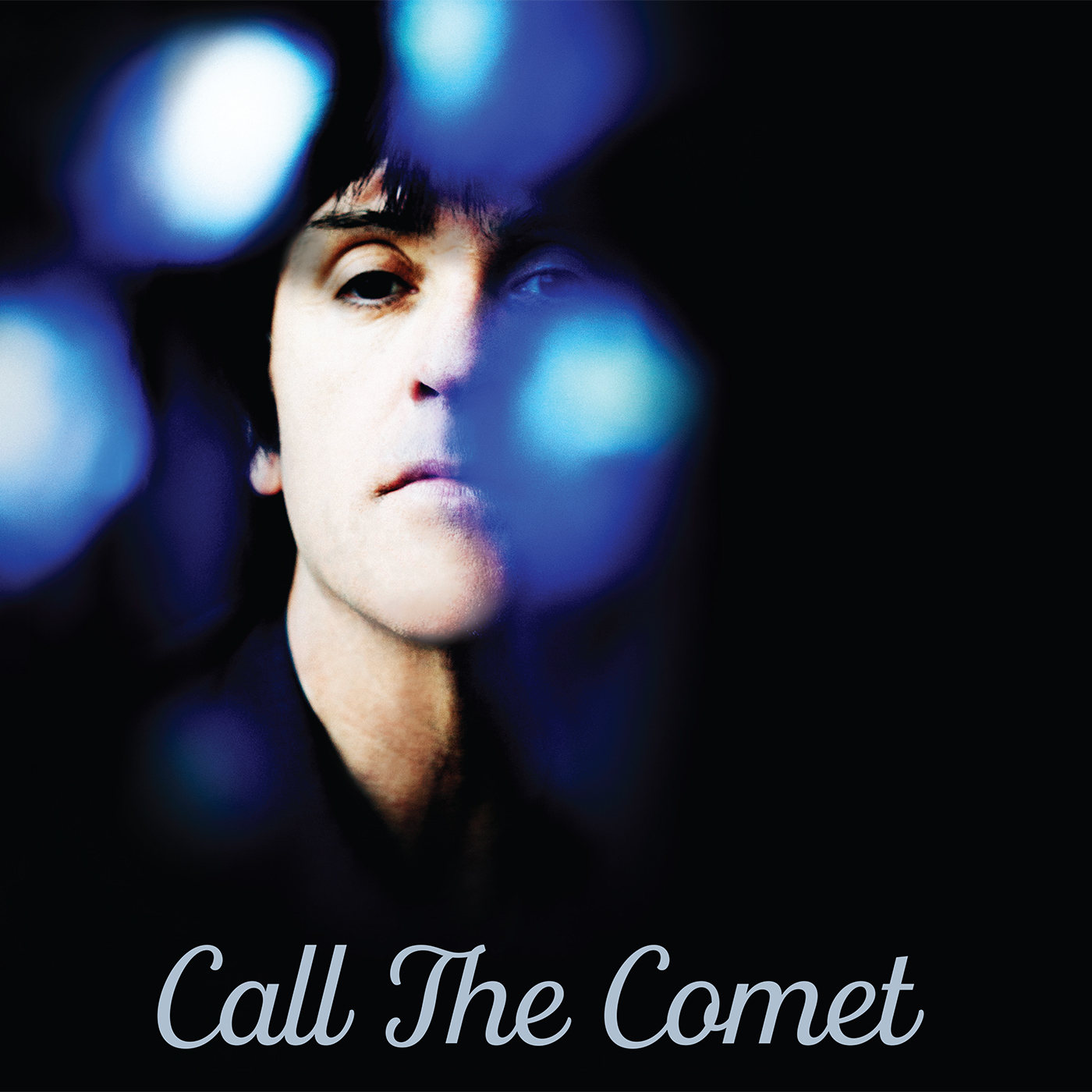
“There is a real argument for certain restrictions being advantageous to good creative choices,” says Marr. “The time I came out of, guitar culture had a lot of things that were out of date. I never saw punk rock as the letter ‘A’ in a new lexicon of making music. I saw it as the letter ‘Z’ in the old lexicon. I had an open vista to try to invent something new. That old paradigm left us with a few techniques and styles that we could work with, which made it the opposite of today’s option fatigue and choice paralysis. It made us very resourceful.”
The core idea behind the recording was to have it be close to what the band does live. The band records together in the live room quite a bit, although not always. For Marr’s guitars, Doviak places a Shure SM57 and AKG C414 in 60/40 blend up to the amp grille through the Neve 1081s with very little EQ, just a touch of brightness and bite to the SM57 and scooping out of muddiness. This gives an accurate representation of what you would hear standing in front of Marr’s amp at a show. The Shure SM58 is the preferred microphone for his vocals for its grittiness, run through the 1081 into a Tube-Tech CL 1B with low compression ratios to even everything out.
Classic Tracks: The Smiths’ “What Difference Does It Make?” by Barbara Schultz, Sep. 8, 2010
“We used some Lexicon PCM91 outboard reverb and some EchoBoy, not necessarily timed to the track so it could bounce around a bit and fill space,” says Doviak. “I usually go for something slightly degraded, like a cheap Tape Echo—something with character that sits in the background, not distracting, but has some integrity. MicroShift Soundtoys is great for vocal doubling and widening effects. I’d often use Decapitator or Radiator for some dirt. With EQ and compression, the less, the better. I sometimes found the vocal getting more and more separated from the song by doing too much fiddling. Often just flattening EQs and compression improves things and is a reminder to keep listening to the overall picture.”
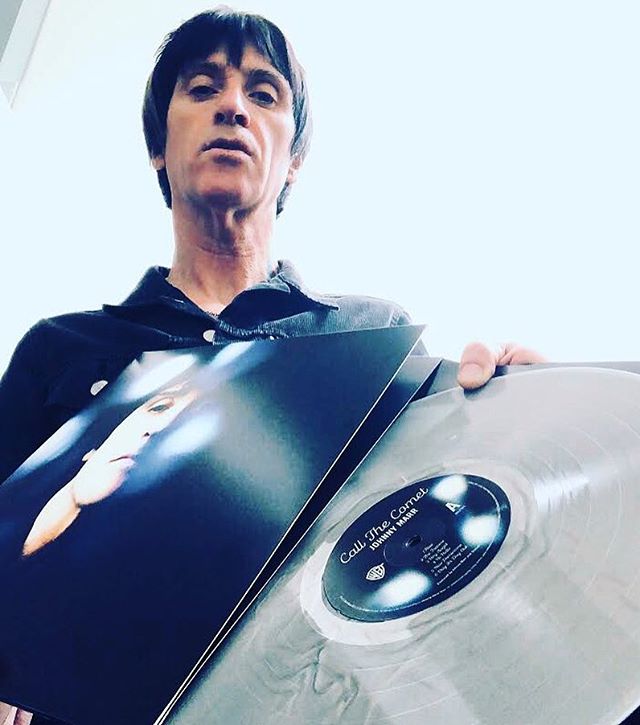
This same philosophy is kept with the rhythm tracks. The bass, played by Iwan Gronow, goes through a Fender Bassman 100 or 300 through an 8×10 speaker. When not going DI, either an Electro-Voice RE20 or Neumann TLM 103 or beyerdynamic m380 microphone is used.
The Beyer is mainly placed outside drummer Jack Mitchell’s kick drum. An SM57 is placed at the top of the snare, with Coles 4038 and Neumann KM 184 as overheads, equidistant from the snare. These might have some compression through a UREI 1178, all going through the Neve 1081 preamp, with a few of the microphones going into a UA 2-610. An SM58 is pointing away from the kit toward the opposite wall, where there are some big windows. This is the only thing that gets squashed and distorted with a Soundtoys Devil-Loc or Decapitator. Slate SSL or Neve plug-ins or Fairchild is used to level off the drums. The only processing done is some tone shaping, with the goal being to keep the sounds as open and natural as possible.
“When writing or mixing, it’s good to try and shake off the analytical frame of mind and try to hear the music as if for the first time,” Doviak suggests. “It’s not easy to do. You have to distract yourself, shift your conscious focus away. A great way to do this is by changing to a different speaker source. We often have a little Bose speaker off to the side on one of the racks. I would flick over to that and it distracts the brain a little so you can suddenly hear things that need addressing: too loud hi-hat, weak chorus, more bass, that kind of thing.”
“As you get older, you earn the right to be influenced by other disciplines,” Marr says. “David Hockney, for example, he’s someone who, in his 80s, is still using new equipment and new technology, but he absolutely knows the history of art. When I started to apply that to the way I work, it inspired me. What I have learned from the other disciplines is, people I consider to be great are keen students of their craft. They work on what they do until they drop. Having all this experience and knowledge, they’re looking to not repeat themselves. That’s what I take from my heroes, who more and more are outside of rock music.
Engineer Jim Scott: Building Success the Old-Fashioned Way, Feb. 1, 2009
“I find myself in this situation now where I feel like I can go wherever I want. The trick, then, is to write interesting songs for me to put the guitar on or write interesting guitar songs that really stretch my imagination as a singer and a lyricist.”
Johnny Marr website • Twitter (@Johnny_Marr) • Johnny Marr on Spotify • johnnymarrgram on Instagram • YouTube • @officialjohnnymarr on Facebook
